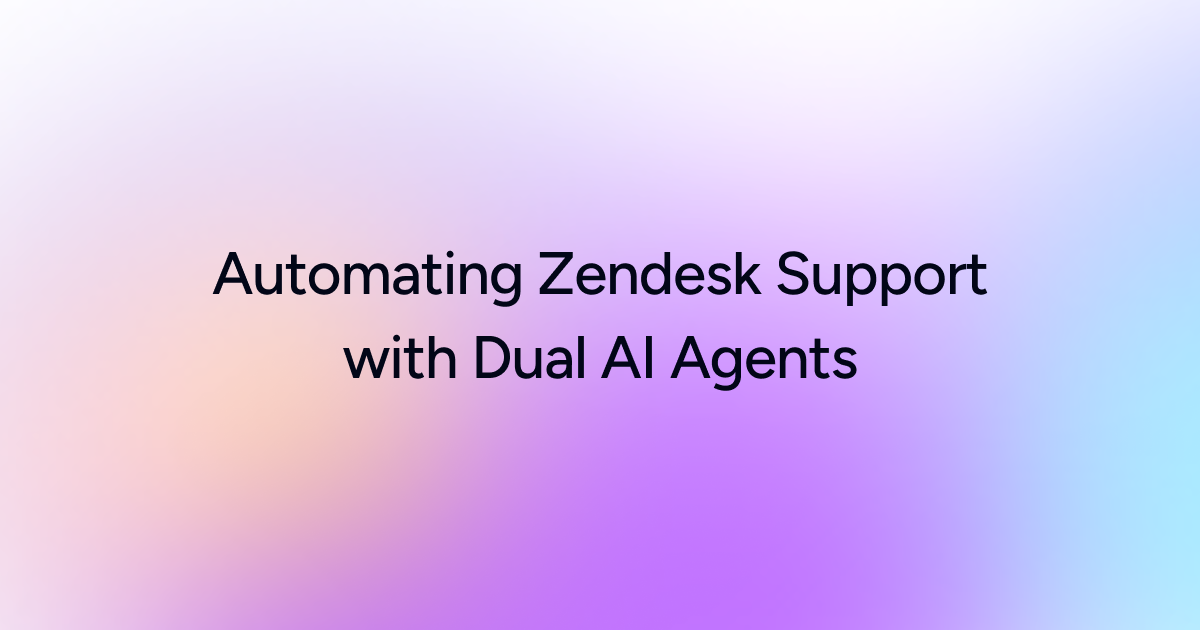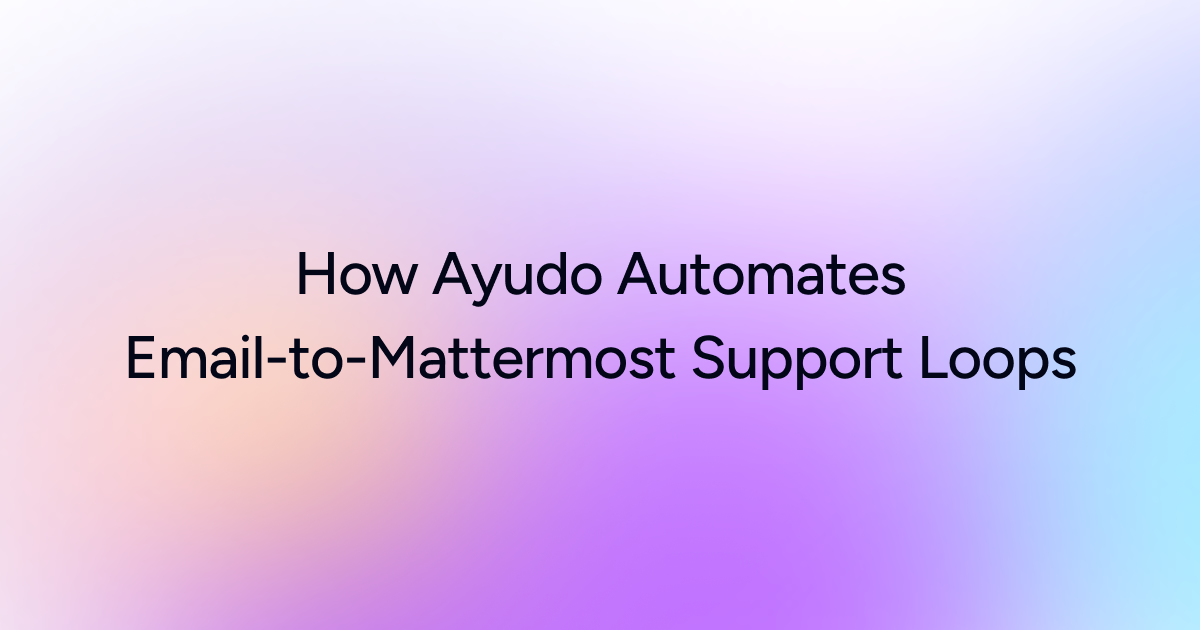
Customer support leaders have always tried to balance speed, empathy, consistency, and efficiency. AI promised to help, but most solutions so far rely on a single chatbot trying to do it all. Now a new idea is gaining traction: multi-agent architecture.
Is this just another buzzword in the AI hype cycle, or does it signal a fundamental shift in how customer support will operate?
What is Multi-Agent Architecture?
To understand the idea, picture a busy airport. If one person had to check tickets, screen luggage, guide planes, and handle emergencies, chaos would be unavoidable. Instead, airports divide responsibilities among specialized teams, each trained for a specific function but coordinated through a larger system.
Multi-agent architecture works in the same way. Instead of one AI assistant managing every task, companies can design multiple smaller AI agents, each with a clear role:
- Frontline agent: greets customers and identifies intent
- Knowledge agent: retrieves answers from FAQs or documentation
- Action agent: performs tasks such as refunds, order lookups, or password resets
- Escalation agent: decides when to route to a human representative
These agents communicate in the background, coordinating so the customer experiences a seamless conversation.
Why Leaders Are Paying Attention
Many companies experimented with single-agent chatbots and found them useful for simple tasks but unreliable in complex ones. Multi-agent setups promise more.
- Accuracy improves when agents specialize
A knowledge agent trained only on official documentation will likely answer more reliably than a generalist bot. Narrow scope means fewer mistakes. - Scaling becomes modular
As workloads grow, new agents can be added without retraining a single giant model. Each new business process or product line gets its own digital teammate. - It mirrors human teamwork
In real call centers, agents share notes, escalate tricky cases, and collaborate. Multi-agent AI follows this same playbook instead of pretending one assistant can handle everything. - It builds flexibility for the future
When new systems or APIs are introduced, companies can plug in new agents instead of rebuilding a chatbot from scratch. - It reduces single points of failure
If one agent struggles, the system can still fall back on others. The risk is distributed rather than concentrated in a single chatbot.
For CX leaders, this isn’t just about technology. It is about designing support systems that can grow with the business instead of constantly being patched and rebuilt.
The Hidden Challenges Nobody Talks About
The promise is exciting, but reality is harder. Multi-agent setups introduce challenges that leaders must be aware of before they invest.
- Orchestration is the hardest problem
Each agent may perform well individually, but without strong coordination customers may end up in loops or receive contradictory answers. Designing the “conductor” for the orchestra is often more complex than building the individual players. - Data silos do not magically disappear
If your CRM, ticketing system, and knowledge base are disconnected, multiple AI agents will still be limited. Integration remains a prerequisite. - Customer patience is thin
AI promises instant answers. If coordination between agents slows things down, customers notice. The entire benefit of accuracy is lost if speed declines. - Costs rise before they fall
Running and monitoring multiple agents requires infrastructure. Businesses often find costs increase during pilots, and savings only appear once workloads are balanced correctly. - Operational complexity grows
Managers now need to supervise not one bot, but an ecosystem of agents. This requires new monitoring tools, governance models, and escalation processes.
Early adopters sometimes overestimate readiness. The hype sells a vision of AI agents working like seasoned employees, but the orchestration layer is often the weakest link.
Real-World Scenarios: Where Multi-Agent Makes Sense
Despite the hurdles, real examples are emerging that showcase how multi-agent architecture can reshape support.
- E-commerce: A frontline agent captures intent (“Where’s my order?”). A logistics agent checks shipping APIs. A resolution agent offers a discount or refund if the package is delayed. The customer only sees a quick, clear answer.
- SaaS support: A triage agent determines if a query is about billing, onboarding, or troubleshooting. Each type is routed to a specialist agent. Billing requests may be resolved in seconds, while technical queries are guided step by step with documentation.
- Banking: One compliance agent ensures responses meet regulations, while another securely accesses accounts to process transactions. Keeping compliance and execution separate both improves trust and reduces risk.
- Healthcare portals: Patients may interact with scheduling agents, insurance verification agents, and symptom triage agents. Each handles a specialized workflow that requires distinct data and rules.
These scenarios show the real strength of multi-agent setups: modularity. Much like microservices transformed software engineering by replacing monoliths with smaller, agile components, multi-agent AI is attempting to do the same for support automation.
How to Experiment Without Getting Burned
The excitement around multi-agent AI is real, but leaders should approach adoption carefully. A few principles can help.
- Start with real pain points
Look at where your current chatbot fails. Are escalations too frequent? Are answers inconsistent? Multi-agent setups should be introduced to solve specific weaknesses. - Run narrow pilots
Choose a workflow that is easy to measure, like refunds or onboarding FAQs, and run a small-scale test. Scaling too quickly risks wasted investment. - Focus on orchestration early
The orchestration layer is the glue that holds everything together. Evaluate orchestration platforms or design strong governance rules before rolling out agents broadly. - Keep humans at the core
AI should make human agents more effective, not replace them. Track the quality of escalations and ensure human oversight remains strong. - Tie pilots to measurable ROI
Whether it is reduced handle time, better first-contact resolution, or higher CSAT, link pilots to numbers that matter. This keeps experiments accountable and avoids science projects that never scale. - Prepare teams for new roles
Supervising a multi-agent system is different from managing a single chatbot. Training managers to monitor, intervene, and adjust orchestration rules is critical.
By following these principles, CX leaders can test the promise of multi-agent AI without betting the farm.
So, Is This Hype or a Real Shift?
The honest answer is both. There is hype because the technology is still maturing. Orchestration platforms are new, and best practices are being written in real time. But there is also substance. The logic behind multi-agent setups is compelling and mirrors how human teams already work.
No company expects one employee to handle finance, sales, and support all at once. Why should a chatbot be expected to do so? The move toward digital teams of AI specialists feels like a natural next step.
Over the next few years, we will likely see more organizations adopt multi-agent approaches. Not because it is fashionable, but because it solves problems that single bots cannot fix: complex escalations, compliance-heavy industries, and workflows where accuracy is non-negotiable.
Conclusion
For CX leaders, the real decision is not whether multi-agent AI is overhyped. The decision is whether to prepare for a future where automation looks less like a chatbot and more like a coordinated team. Customer support has always thrived on collaboration, specialization, and adaptability. AI will only succeed when it reflects those same principles. Multi-agent architecture may not be perfect today, but it signals where support is heading: a world where digital teammates handle specialized work while humans provide empathy and judgment.









